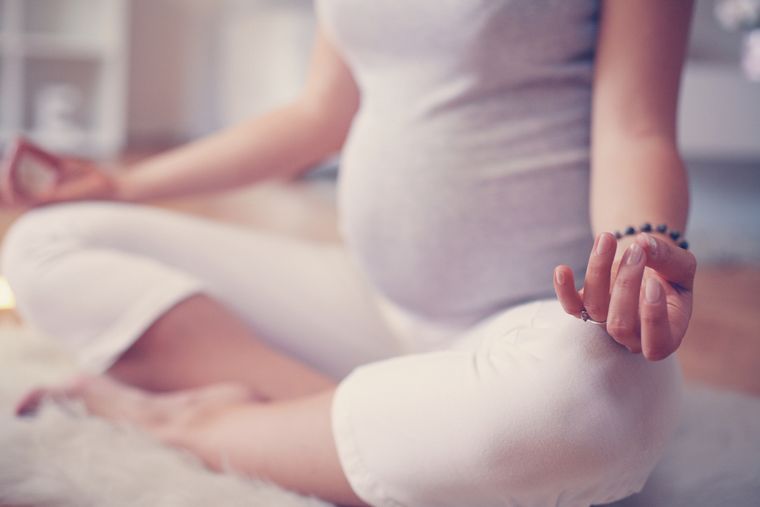For most of their lives, women have been besieged with negative stories of birthing experiences. They have been conditioned to believe that pain and fear is synonymous with childbirth. This is problematic, because fear causes muscle tension, which exacerbates the pain in labour. The result is exactly what they feared most—long, painful birthing or unnecessary intervention.
However, for a growing number of women, hypnobirthing is transforming the birth experience. A relatively new technique hypnobirthing involves self-hypnosis, guided imagery and special breathing techniques to combat fear and pain during labour. In the guided sessions, women learn to trust that their bodies know how to bring their babies into the world in the calm and gentle way that nature intended.
A hit among celebrity mommies like Gisele Bündchen, Jessica Alba and Kalki Koechlin, hypnobirthing has now gone mainstream with classes available at various places. Many midwives and doulas (a trained professional who provides physical, emotional and informational support to a mother before, during and shortly after the childbirth) are learning the technique. Angelina Jolie is also said to have tried the technique; even the Duchess of Cambridge Kate Middleton opted this when she delivered Prince George and Princess Charlotte. “There has been a lot of media coverage in the past few years of the increasing number of unnecessary caesarians and interventions by hospitals. This has led to increased awareness among families who now understand that a baby born naturally is the best way to bring a life into the world. A lot of new parents are opting for hypnobirthing and waterbirths due to their ability to help a labouring mother achieve a complete intervention-free delivery,” says Sanam Manchanda a certified doula who helped Koechlin with her birthing. But is the birthing technique, worth a try?
And how does hypnobirthing actually work?
The basics
Hypnobirthing is not a new phenomenon. The practice is based on the research of British obstetrician Dr Grantley Dick-Reid, who published the book Childbirth Without Fear in 1933. An advocate for natural childbirth, he believed that when a woman is worried or scared during labour, blood and oxygen is diverted away from the uterus, causing tension and pain. But when a woman remains calm and relaxed, the uterine muscles will avoid tension, allowing the body to produce oxytocin and endorphins, which are a natural pain reliever.
Leading US hypnotherapist Marie Mongan later took this theory and created an antenatal education programme based on self-hypnosis, the aim of which was maximum relaxation during labour and delivery. Breathing exercises have long been part of antenatal classes. Hypnobirthing takes this and adds relaxation, visualisation and mindfulness techniques to put the mother in control of what is happening to her body during childbirth.
All in the mind
Hypnobirthing techniques are learnt along with the birthing partner (spouse, mother or mother-in-law) at special antenatal classes. “It is all about sending suggestions to the mind that everything will be fine. It is a normal process and a healthy baby is going to be born in a natural way. All through the process we also speak to the baby—‘you are in a place of love, you are wanted, you are loved, you are healthy, you are happy and you will come when the time is right.’ It takes around six sessions for the mind to accept it. We go through the entire process of delivery under hypnosis. The mother is also given a recording with the suggestion which can be played at home at night,” explains Dr Maria Vasudevan, clinical hypnotherapist.
Unlike the stereotype, in hypnobirthing, nobody swings a pocket watch back and forth to lull a mother to sleep during labour. It doesn’t involve any chanting or sleeping during labour. “In fact, the mothers stay awake during the process, but train themselves to calm down so that they may appear as if they are sleeping. Some use instrumental music, rhythms and affirmations. They are encouraged to visualise a relaxed place or a goal like cuddling with their newborn,” says Vasudevan.
Pain is the biggest fear for most mothers. “Under hypnosis, we induce physical pain and prepare them for labour. We poke them gently with a sharp object. Under normal circumstances they would flinch and pull back but under hypnosis they don’t feel the pain. We increase the pain gradually to escalate their tolerance. The entire process relaxes the mind and every muscle in the pelvic area. We ask them to imagine that when the spams come and its time to push the baby out, it is just a gentle wave. When a person listens to these suggestions everyday it goes deep down into their sub-consciousness. In the altered state of consciousness, the pain experienced in labour becomes a controlled sensation for the woman. Finally, when the actual birthing takes place, she is completely relaxed,” says Vasudevan.
Hypnobirthing mothers will still be aware of everything going on around them but they will be able to chat and be in good spirits. Self-hypnosis allows them to be fully relaxed and totally in control, able to ‘tune out’ the negative feelings and concerns. Dr Gayathri Kamath, senior consultant, obstetrics and gynecology, Fortis Hospital, Bannerghatta road, says hypnobirthing works because it helps to remove the fear many women feel about childbirth. “Childbirth is a painful experience and hypnobirthing revolves around making this process a nature-driven event with less usage of medications or instrumentation. It also helps the labouring woman to be calm with the help of breathing techniques and face labour as it comes. I do not recommend hypnobirthing to all pregnant women but I strongly suggest it to women who opt for a cesarean section due to the fear of labour,” she says. According to her, many a times, these women come around when they are sensitised about the pain relief options which are available or when they meet women who have delivered naturally. “There is still a small subset who despite our counseling and stressing the merits of natural birth versus a cesarean section still choose the latter. Such women may immensely benefit from hypnobirthing classes,” she says. Gayathri however cautions that hypnobirthing practitioners should also know the limitations involved and work in tandem with health care providers with professional training in childbirth.
According to Manchanda, the main difference she notes with couples who choose hypnobirthing over other methods is preparedness. “When I watch a to-be-mother during labour, I can actually tell by her body language if she has done a hypnobirthing course. Hypnobirthing mothers have a much higher chance of achieving a natural birth, due to the increased levels of relaxation they manage to achieve during the labour process,” she says. Hypnobirthing can help the mother manage stress hormones, such as adrenalin, and reduce anxiety, which should lead to a calmer birth. During labour, the body produces a chemical called oxytocin, which helps progress the labour. Stress hormones affect the production of oxytocin and make the labour longer. Managing stress may also help to reduce some of the fear and pain experienced during labour.
Mothers say it all
Many mothers who have tried hypnobirthing swear by it as a powerful and transformative experience. Hypnotherapy helped Tripti Bhatia Gandhi, founder and CEO of public relations company Detales Brand Communications, keep a positive attitude throughout the pregnancy. “The hypnotherapy sessions teach you to prepare for whatever comes your way. This was extremely helpful for me since I had to undergo an emergency cesarean section. Focusing on relaxation while letting go of distracting thoughts is essential when you go through pain post delivery. I could barely feel this pain throughout my pregnancy and before we knew it, I was on my feet the next day after my delivery.” Bhatia would listen to recorded sessions at night before going to bed and practised breathing techniques taught in class. A session with her husband also helped him prepare for the delivery and maintain a positive attitude throughout.
Women choosing to have a hypnobirth say their experience of childbirth is not only less painful, it is also an empowering event that helps to set a positive mark to the start of motherhood. Hypnobirthing helped Vanika Choudhary, founder, Sequel, one of Mumbai’s most popular organic brand, create a pre-birthing bond with the baby. “My gynaecologist Dr Ameeth Durandhar recommended that we take hypnobirthing classes and also work with a doula as we wanted to go in for water birth. He mentioned that this would make us aware of the whole water birthing process and prepare us for it. Talking to the baby, sending positive affirmations to the baby, breathing techniques, meditation and mental exercises where we visualised the birthing process ensured that I stay calm and focused when I got into labour. The result was absolutely phenomenal. It would have been impossible to achieve the birth I envisioned without hypnobirthing,” she says.
Essentially, hypnobirthing is like meditating while in labour. It combines deep breathing, relaxation, positive thoughts and upbeat language, as well as visualisation techniques to make the mother feel confident and, ultimately, making the birthing process easier.
Tips for hypnobirthing
* Do all your research as early as possible and find the team and birth place that will support you and your needs the best.
* What we hear and see during this period impacts the birth. Speak to women who have had positive birth experiences. This helps to boost confidence.
* Start hypnobirthing as early as possible; ideally from 24 weeks or earlier if you are particularly anxious.
* Practise as often as you can so that the techniques will become automatic during the birth.
* Listening to positive affirmations and hypnobirthing audio tracks daily will boost your sense of optimism and help you to ignore all the negativity surrounding the birth.
* Ensure your partner is on board. If not, think about who might support you in your practices and help you feel good throughout the birth.
* Practising daily in the lead up to birth will reduce anxiety. With time, you can shift from panic and fear to excitement.





